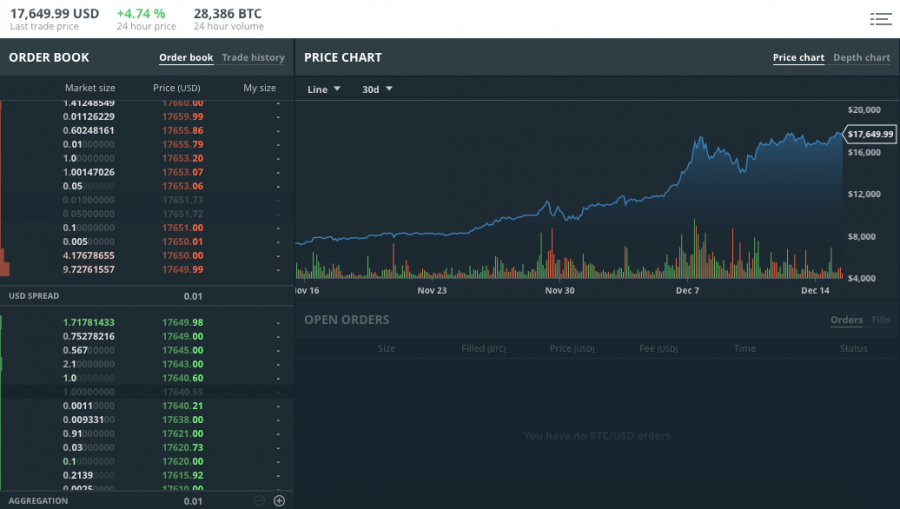Cryptocurrencies: fad or future?
The price of Bitcoin changes continuously, and trades, which are shown on the left, occur every second. The price of Bitcoin rose 700% in 2017.
Forget about earning ‘Franklins,’ make way for the age of digital currency with Bitcoin, Litecoin, Ripple and countless other types of electronic money that are taking both the financial market and America by storm.
But what exactly does this mean for the regular consumer? Electronic currency is not controlled by any government or business, rather it can be used to pay for a variety of goods and services anywhere in the world. In the United States, the Federal Reserve controls how many dollars can be printed. Cryptocurrencies like Bitcoin, on the other hand, have a limited amount. For Bitcoin, the maximum number of coins that can ever be circulation is 21 million, according to the Bitcoin Wiki. CryptoCoin Mastery, a blog about cryptocurrencies, estimates that the last Bitcoin will be produced in 2041.
Now the market for cryptocurrencies has been booming since 2013, and today, over 300 different cryptocurrencies have reached a cap of one million dollars. Cryptocurrencies reach these values when people trade hard currency like dollars for coins. Right now, one Bitcoin is worth $17,649, but the price changes every second. Bitcoins, along with other cryptocurrencies, is used like money, but it’s also traded like a stock. The prices for these cryptocurrencies are volatile, which means that they quickly change. However, there are various banks and ATMs around the country and the world that trade tangible money for coins.
CEO of Bitcoin, Bobby Lee, calls the currency “faster, better, cheaper” because of its liquid properties, instantaneous nature and lack of third party fees. Companies like Bitcoin predict that soon, the Federal Reserve will create an algorithm for their own cryptocurrency to remain in control of America’s financial market.
However, the extremely rapid and worldwide growth of this innovative method of payment has raised concerns over whether or not this sector is a bubble that has been inflated on false pretenses of wealth.
“The bubble to end all bubbles continues. Cryptocurrencies only have value if accepted as currencies.” global chief economist Paul Donovan of UBS Wealth management wrote in a post Monday, Dec. 11. “However, they cannot be used for the most important transaction in an economy, and cryptocurrency supply can only rise and never fall (making them a poor store of value).”
Whether or not this revolutionary financial innovation is a market bubble or not, economists agree that it changes the landscape of currency for the future. There is high potential for a future in virtual money. But if the market shrinks, the losses could be devastating.































moses brodin • Jul 20, 2020 at 3:09 am
I am not sure where you are getting your info, but great topic. I needs to spend some time learning more or understanding more. Thanks for excellent information I was looking for this information for my mission
Netanel Kohen • Dec 15, 2017 at 1:22 pm
Awesome job! Super cool seeing the school write about bitcoins ?